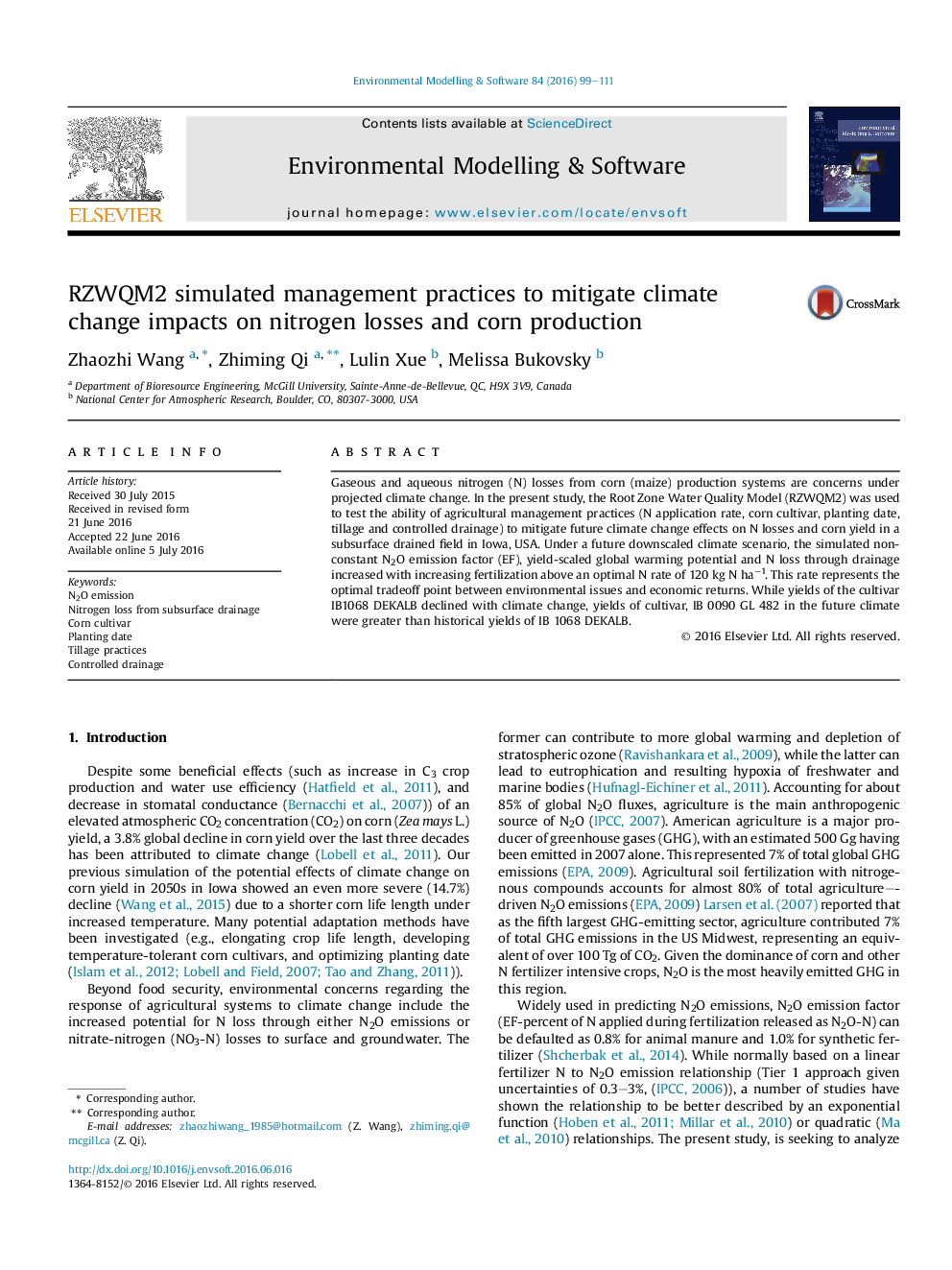| Article ID | Journal | Published Year | Pages | File Type |
|---|---|---|---|---|
| 6962314 | Environmental Modelling & Software | 2016 | 13 Pages |
Abstract
Gaseous and aqueous nitrogen (N) losses from corn (maize) production systems are concerns under projected climate change. In the present study, the Root Zone Water Quality Model (RZWQM2) was used to test the ability of agricultural management practices (N application rate, corn cultivar, planting date, tillage and controlled drainage) to mitigate future climate change effects on N losses and corn yield in a subsurface drained field in Iowa, USA. Under a future downscaled climate scenario, the simulated non-constant N2O emission factor (EF), yield-scaled global warming potential and N loss through drainage increased with increasing fertilization above an optimal N rate of 120 kg N haâ1. This rate represents the optimal tradeoff point between environmental issues and economic returns. While yields of the cultivar IB1068 DEKALB declined with climate change, yields of cultivar, IB 0090 GL 482 in the future climate were greater than historical yields of IB 1068 DEKALB.
Related Topics
Physical Sciences and Engineering
Computer Science
Software
Authors
Zhaozhi Wang, Zhiming Qi, Lulin Xue, Melissa Bukovsky,
